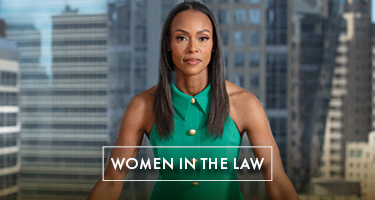PAY EQUITY—particularly for women and minorities—continues to be a top priority for employers. Management generally works to design and implement fair and equitable policies and procedures. Even with the best intentions, though, an employer can end up with problems. They’re also facing increased pressure to achieve full pay equity and greater scrutiny of their compensation policies, practices and numbers.
In 2016, I cofounded Ogletree Deakins’ Pay Equity Practice Group to help employers respond to these pressures and develop best practices for achieving pay equity. While the issue has been in the headlines of late, it has also been a focus of legislators, investors, activists and employees.
Notably, pay discrimination has been illegal for decades. The federal Equal Pay Act (EPA), which forbids unexplained pay differences based on gender, was passed in 1963, and Title VII of the Civil Rights Act, which prohibits discrimination in compensation (and other employment decisions) based on race, sex, color, national origin and religion, became law the next year.
In addition, many states have had their own versions of the EPA and/or Title VII on the books for years. Pay equity has come to the fore much more recently, though, based in part on data showing that disparities related to gender and race persist. Here are some of the trends surrounding this issue—and what employers might consider doing, legally and practically, to address them.
Legislative and Regulatory Trends
In 2016, California amended its existing pay equity law to make it more stringent, starting a trend followed quickly by a number of other states. These laws typically included a variety of changes, including:
• loosening the standards an employee must meet to prove a pay disparity claim;
• increasing the burden on companies to justify pay differences—including, in some states, severely limiting the reasons they may rely on to justify them;
• prohibiting employers from having policies that forbid workers to discuss their compensation;
• prohibiting them from seeking or relying on prior salary history when making compensation decisions;
• requiring them to disclose pay ranges prior to or in connection with hiring or promoting candidates for open positions;
• requiring them to submit their pay information to the government (and, in Illinois, to certify that they are in compliance with applicable pay equity laws).
Despite several attempts by Congress, the federal government has not passed any pay equity laws since 2009 and the Lilly Ledbetter Fair Pay Act, which provides that the statute of limitations for a pay discrimination claim under Title VII is triggered by a paycheck that reflects a pay difference that cannot be explained by legitimate, nondiscriminatory factors.
Prior to the passage of Ledbetter, the statute of limitations on a pay discrimination claim under Title VII was based on the date the allegedly discriminatory decision was made. However, the federal government has issued some regulations—primarily relating to employers that are federal contractors—addressing issues relating to pay transparency, disclosure requirements and mandating equity analyses.
These legislative and regulatory changes have increased the risk that employers will be subjected to claims. Such risk has made it imperative for them to examine their compensation policies, conduct pay equity analyses and take other measures to confirm that they’re paying their employees fairly and equitably.
Non-Legislative Pay Equity Trends
Employers may also experience a variety of “non-legal” pressures to analyze pay, address identified inequities and, in some cases, publicly disclose the results of those efforts. Some of the pressure might come from inside the organization—individual employees raising concerns, staff affinity groups seeking to advance a particular cause or Diversity, Equity and Inclusion committees and leaders incorporating pay equity into their overall strategy.
There may also be external pressure: activist shareholder groups demanding that the companies in which they have an ownership interest analyze compensation and disclose the results; investors relying on ESG reports that include pay equity efforts and metrics to make their investment decisions; SEC requirements that employers include so-called “human capital” metric reports in their 10-K filings. These forces have also led companies to take a closer look at their compensation programs.
Pay Equity Analyses and Audits
A pay equity analysis or audit can include several elements. First, an employer may review its compensation policies and procedures to determine whether they
• are compliant with applicable laws;
• are properly designed to achieve desired business results;
• incorporate sufficient guidance and guardrails to provide for strong, supportable, nondiscriminatory decision making regarding pay; and
• are being followed as expected, as a robust, well-designed compensation program may lead to unexplained disparities if it’s not enforced.
Second, a company may conduct a manual assessment of pay differences on relatively small employee populations or subgroups. This entails identifying employees who are performing equal, substantially equal or substantially similar work (depending on the applicable law), evaluating whether individuals within that group are paid differently and determining whether those differences can be legitimately explained. If they can’t be, the employer may adjust the compensation of anyone identified as improperly underpaid.
Finally, when assessing larger employee groups, an employer may conduct a statistical pay analysis. This can involve a multiple regression methodology—which assesses the pay of employees in appropriate comparator groups after controlling for relevant factors such as tenure and performance history—or other statistical tests. This approach enables the employer to assess pay equity across the organization, parts of the organization or within identified comparator groups; identify groups with statistically significant results adverse to a particular race or gender demographic; and assess whether pay differences may be explained by data not incorporated into the analysis.
The employer should consider conducting pay equity analyses under the attorney-client privilege, as it is typically seeking advice about whether it might incur legal risk. If the company plans to disclose the results of the analysis, though, it may waive that privilege protection.
Conclusion
In our work litigating pay equity claims and conducting proactive pay equity analyses, we rarely come across evidence of companies intentionally paying employees differently based on protected characteristics. What we do often find is that compensation policies and procedures have gaps in them—as written, implemented or enforced (or not enforced)—that result in unexplainable pay differences. Legal risk ensues when those differences affect particular gender or racial groups. Employers must continue working to evaluate and improve their compensation programs to ensure they’re achieving their goal of fair and equal pay.
Liz S. Washko is a shareholder and Managing Director of Ogletree Deakins and is the co-founder and co-Chair of the firm’s Pay Equity Practice Group. Washko represents management in a wide variety of employment matters, at the agency level and in litigation. Washko has particular experience defending employers in FLSA collective actions, in pay discrimination cases (individual plaintiff and class/collective actions) and conducting proactive pay audits and pay equity analyses. In addition to her litigation practice, Washko conducts training on employment issues, drafts and reviews employment policies and agreements and conducts harassment and other types of investigations for employers. Washko is a frequent speaker and writer on topics relating to all types of employment issues and works with clients on preventive strategies to avoid discrimination, retaliation and other employment claims.

































